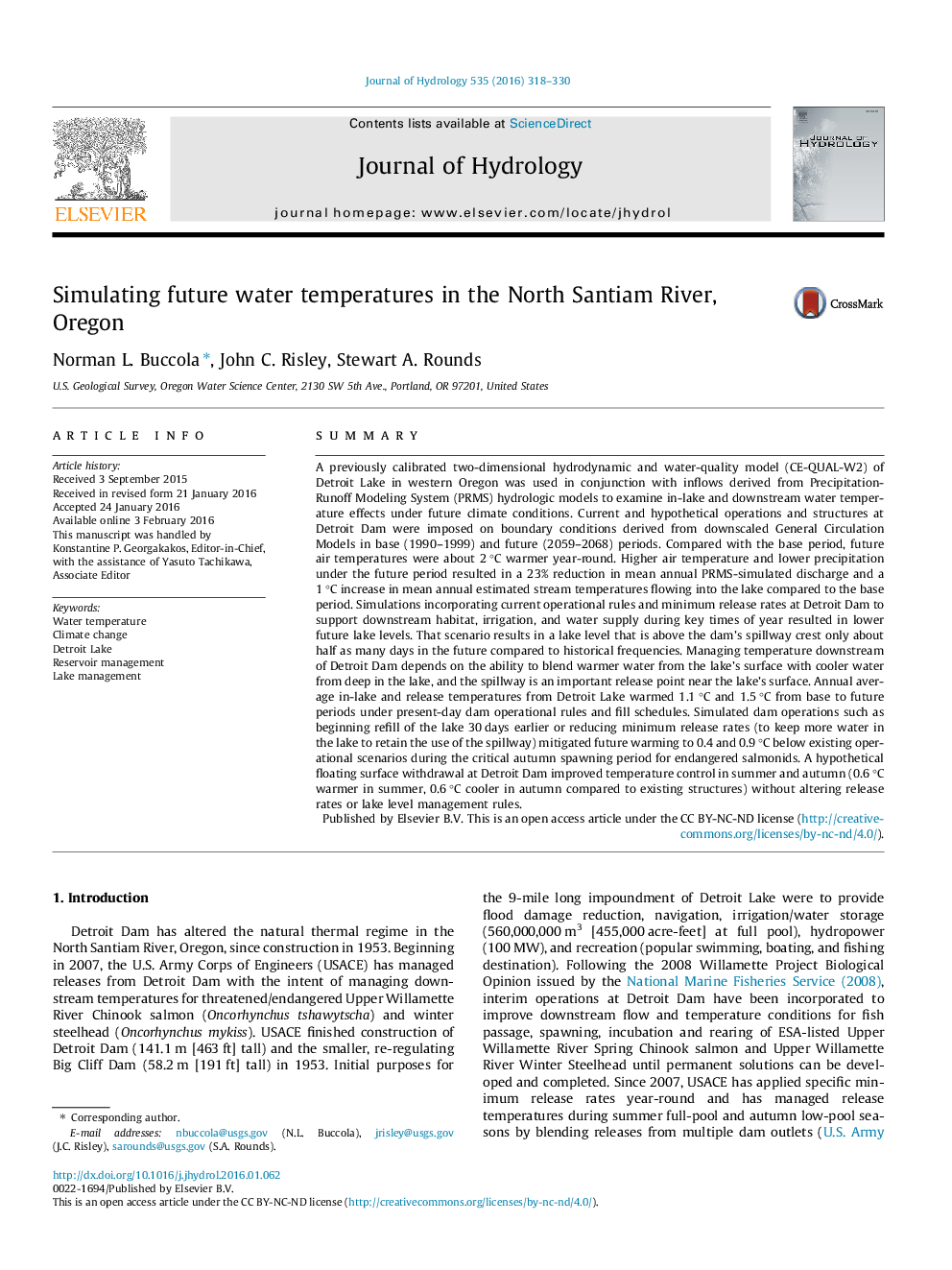| کد مقاله | کد نشریه | سال انتشار | مقاله انگلیسی | نسخه تمام متن |
|---|---|---|---|---|
| 6410119 | 1629917 | 2016 | 13 صفحه PDF | دانلود رایگان |
- Reduced future streamflows lead to lower lake levels at Detroit Lake, Oregon.
- Future reservoir release temperatures warmed more than upstream temperatures.
- Future changes to dam operations or outlets could help to mitigate future warming.
SummaryA previously calibrated two-dimensional hydrodynamic and water-quality model (CE-QUAL-W2) of Detroit Lake in western Oregon was used in conjunction with inflows derived from Precipitation-Runoff Modeling System (PRMS) hydrologic models to examine in-lake and downstream water temperature effects under future climate conditions. Current and hypothetical operations and structures at Detroit Dam were imposed on boundary conditions derived from downscaled General Circulation Models in base (1990-1999) and future (2059-2068) periods. Compared with the base period, future air temperatures were about 2 °C warmer year-round. Higher air temperature and lower precipitation under the future period resulted in a 23% reduction in mean annual PRMS-simulated discharge and a 1 °C increase in mean annual estimated stream temperatures flowing into the lake compared to the base period. Simulations incorporating current operational rules and minimum release rates at Detroit Dam to support downstream habitat, irrigation, and water supply during key times of year resulted in lower future lake levels. That scenario results in a lake level that is above the dam's spillway crest only about half as many days in the future compared to historical frequencies. Managing temperature downstream of Detroit Dam depends on the ability to blend warmer water from the lake's surface with cooler water from deep in the lake, and the spillway is an important release point near the lake's surface. Annual average in-lake and release temperatures from Detroit Lake warmed 1.1 °C and 1.5 °C from base to future periods under present-day dam operational rules and fill schedules. Simulated dam operations such as beginning refill of the lake 30 days earlier or reducing minimum release rates (to keep more water in the lake to retain the use of the spillway) mitigated future warming to 0.4 and 0.9 °C below existing operational scenarios during the critical autumn spawning period for endangered salmonids. A hypothetical floating surface withdrawal at Detroit Dam improved temperature control in summer and autumn (0.6 °C warmer in summer, 0.6 °C cooler in autumn compared to existing structures) without altering release rates or lake level management rules.
Journal: Journal of Hydrology - Volume 535, April 2016, Pages 318-330
